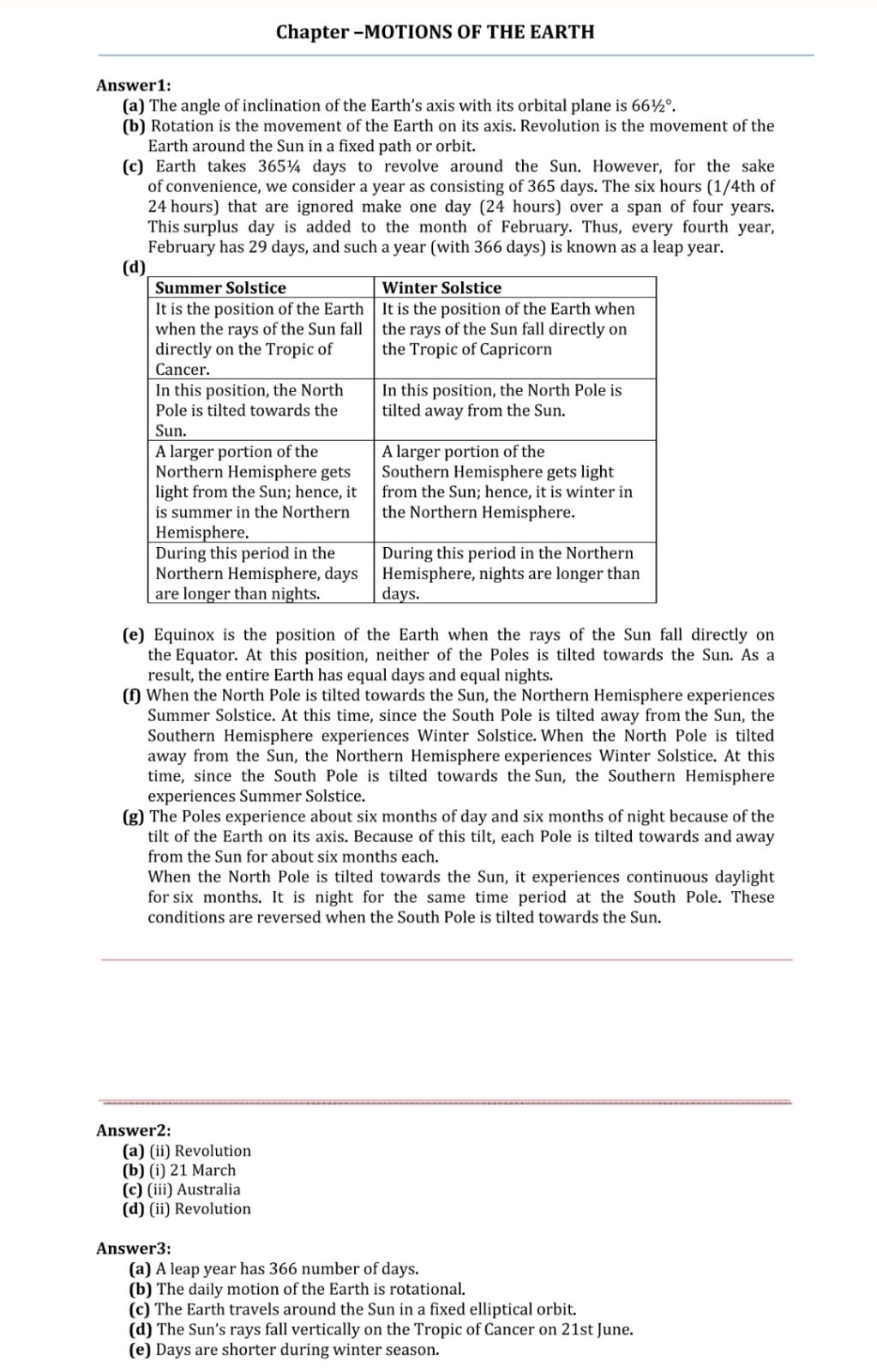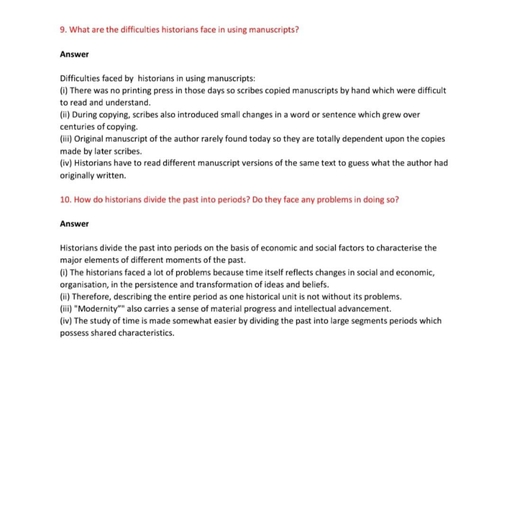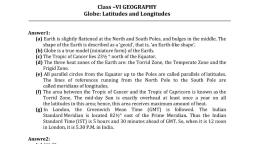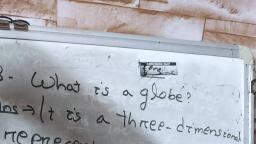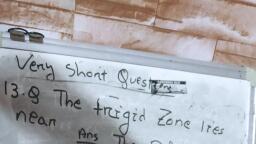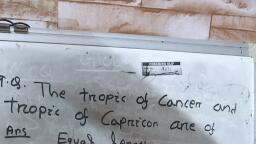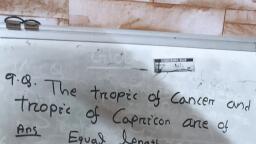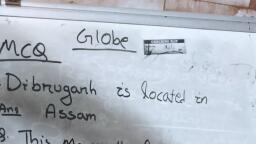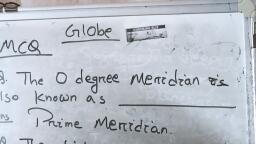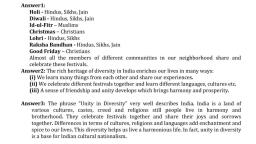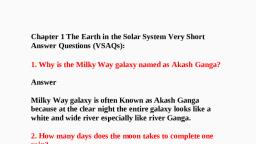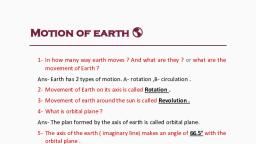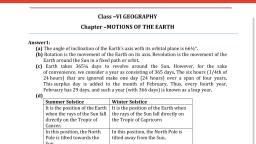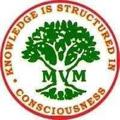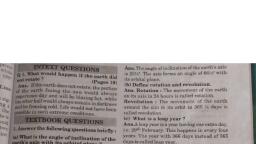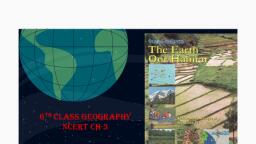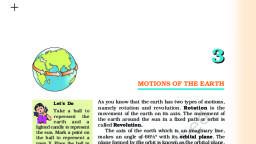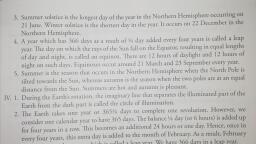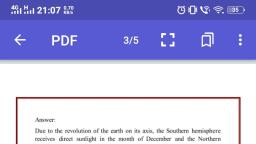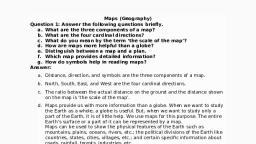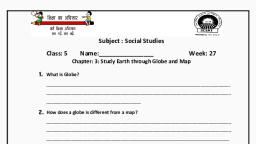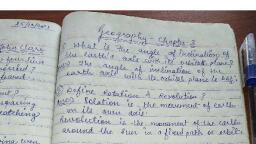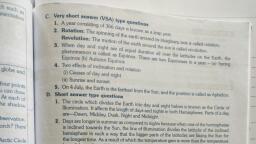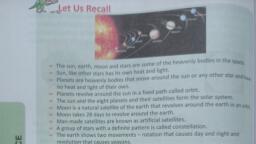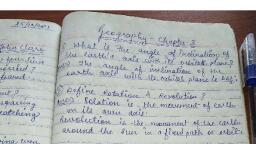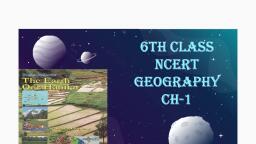Page 1 :
Chapter -MOTIONS OF THE EARTH, , , , Answer1:;, (a) The angle of inclination of the Earth’s axis with its orbital plane is 662°., (b) Rotation is the movement of the Earth on its axis. Revolution is the movement of the, Earth around the Sun in a fixed path or orbit., (c) Earth takes 365% days to revolve around the Sun. However, for the sake, of convenience, we consider a year as consisting of 365 days. The six hours (1/4th of, 24 hours) that are ignored make one day (24 hours) over a span of four years,, This surplus day is added to the month of February. Thus, every fourth year,, February has 29 days, and such a year (with 366 days) is known as a leap year., (d), [Summer Solstice Winter Solstice, It is the position of the Earth | It is the position of the Earth when, when the rays of the Sun fall | the rays of the Sun fall directly on, , , , , , , , , , directly on the Tropic of the Tropic of Capricorn, , Cancer., , In this position, the North In this position, the North Pole is, Pole is tilted towards the tilted away from the Sun., , Sun., , A larger portion of the A larger portion of the, , Northern Hemisphere gets | Southern Hemisphere gets light, light from the Sun; hence, it | from the Sun; hence, it is winter in, is summer in the Northern the Northern Hemisphere., , , , Hemisphere., , During this period in the During this period in the Northern, Northern Hemisphere, days | Hemisphere, nights are longer than, are longer than nights. days., , , , (e) Equinox is the position of the Earth when the rays of the Sun fall directly on, the Equator. At this position, neither of the Poles is tilted towards the Sun. As a, result, the entire Earth has equal days and equal nights., , (f) When the North Pole is tilted towards the Sun, the Northern Hemisphere experiences, Summer Solstice. At this time, since the South Pole is tilted away from the Sun, the, Southern Hemisphere experiences Winter Solstice. When the North Pole is tilted, away from the Sun, the Northern Hemisphere experiences Winter Solstice. At this, time, since the South Pole is tilted towards the Sun, the Southern Hemisphere, experiences Summer Solstice., , (g) The Poles experience about six months of day and six months of night because of the, tilt of the Earth on its axis. Because of this tilt, each Pole is tilted towards and away, from the Sun for about six months each., , When the North Pole is tilted towards the Sun, it experiences continuous daylight, for six months. It is night for the same time period at the South Pole. These, conditions are reversed when the South Pole is tilted towards the Sun., , , , , , Answer2:, (a) (ii) Revolution, (b) (i) 21 March, (c) (iii) Australia, (d) (ii) Revolution, , Answer3:, (a) A leap year has 366 number of days., (b) The daily motion of the Earth is rotational., (c) The Earth travels around the Sun in a fixed elliptical orbit., (d) The Sun’s rays fall vertically on the Tropic of Cancer on 21st June., (e) Days are shorter during winter season.
